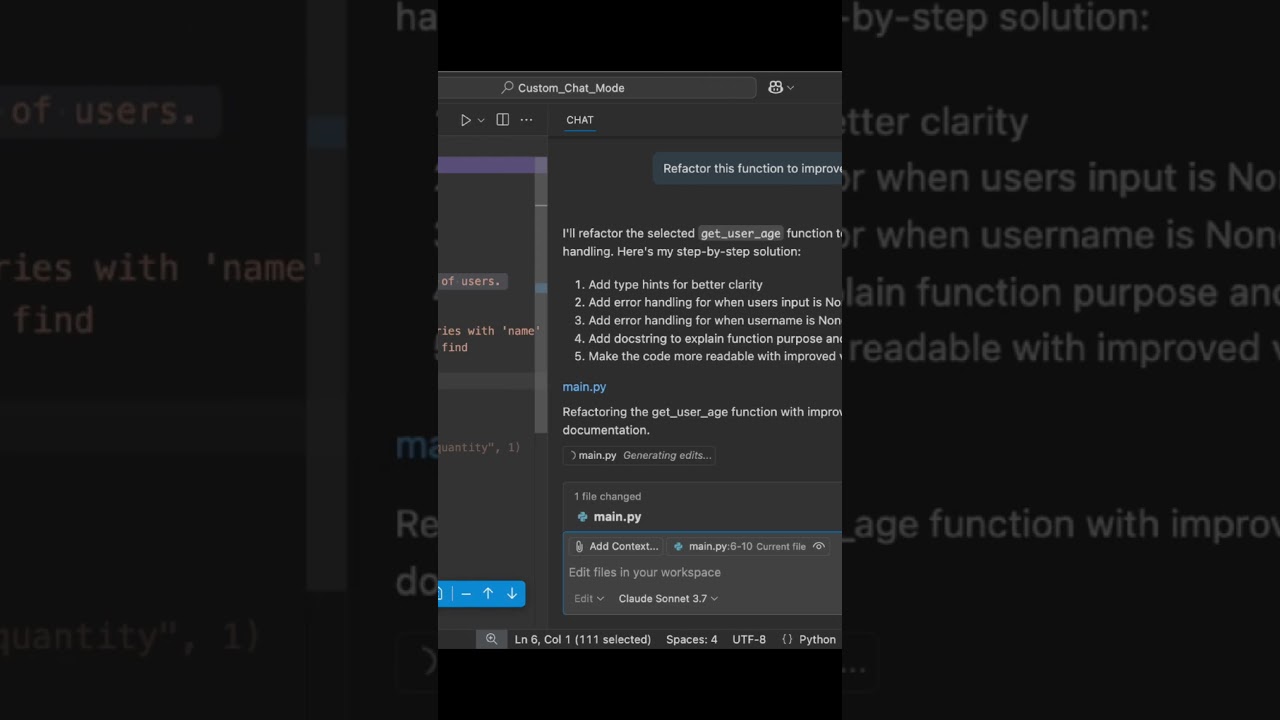The video introduces Custom Chat Mode, a feature that allows users to create personalized chat experiences by configuring model behavior, tools, and instructions tailored to specific workflows. It demonstrates how this mode can focus on planning and strategizing without directly modifying code, offering greater flexibility and control compared to default chat modes.
The video introduces a new feature called Custom Chat Mode, which enhances the flexibility of built-in chat modes such as ask, edit, and agent modes. While these existing modes serve various purposes effectively, Custom Chat Mode allows users to create their own tailored chat experiences by configuring models according to specific needs. This customization involves naming the mode, providing a description, selecting the tools it should utilize, and defining planning instructions that guide the chat’s behavior.
To create a Custom Chat Mode, users start by choosing the option to configure models and then create a new mode, for example, naming it “plan mode.” Along with the name, users add a description and specify which tools the mode should use. Importantly, they also set planning instructions that outline how the mode should handle tasks, including detailing requirements, implementation steps, and testing procedures. This setup enables the mode to operate with a clear focus and structure tailored to the user’s workflow.
Once the custom mode is created, it appears in the drop-down menu alongside the default modes. The video demonstrates this by showing how a user can select “plan mode” from the menu. When a method is highlighted and a prompt is given to refactor it in the standard edit mode, the system responds by explaining the refactoring approach and then proceeds to modify the code. This showcases the typical behavior of the edit mode, which directly interacts with and changes the codebase.
However, the video then contrasts this with the behavior of the newly created plan mode. By undoing the previous changes and switching to plan mode, the user gives the same prompt to refactor the method. Instead of altering the code, plan mode responds by outlining a detailed plan that includes requirements, implementation steps, and testing strategies. This demonstrates how custom chat modes can be designed to focus on planning and strategizing without making any direct changes to the code, providing a safer and more controlled environment for certain tasks.
In summary, the Custom Chat Mode feature offers a powerful way to tailor chat interactions to specific workflows and preferences. It allows users to define how the model should behave, what tools it should use, and how it should approach tasks, whether that involves editing code or simply planning. This flexibility enhances productivity by enabling more precise control over the AI’s actions, and additional information about this feature is available for users who want to explore it further.
